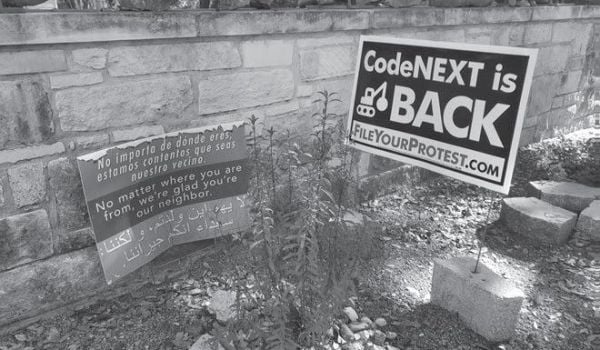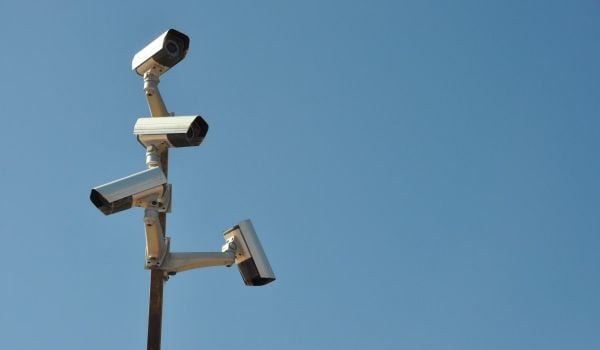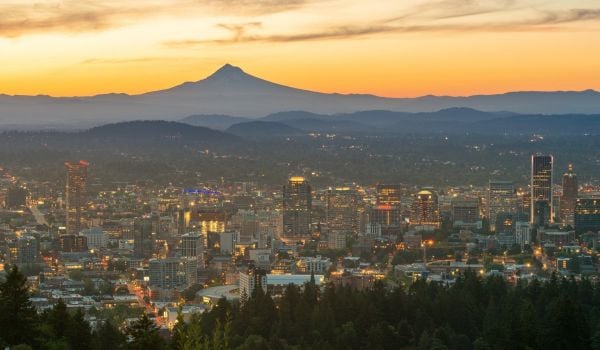This story was originally published at Prism.
Steeped in rich history and vibrant culture, and home to the world-renowned Chicano Park, Barrio Logan has been the epicenter of San Diego’s Mexican-American culture. The neighborhood is a sought-after location, but behind its newfound appeal among gentrifiers and land developers is a long history of environmental injustice and racism that residents have been forced to endure. Barrio Logan’s struggle against pollutants and other environmental contamination is part of a revolutionary legacy of resistance and self-determination that has physically shaped the composition of the neighborhood itself.
For decades, the working-class, historically Mexican-American and immigrant residents have fought uphill battles against junkyards, ship yards, and industrial repair shops that moved into the Barrio, creating air pollution, noise pollution, and numerous other conditions that would never be tolerated in San Diego’s more affluent surrounding residential areas. It’s no coincidence that Barrio Logan is one of the most polluted areas of San Diego—the area is also more than 70% Hispanic, and about 20% of residents live below the poverty line.
Today Barrio Logan still sits right next to the Port of San Diego, a hot spot for 18-wheelers, cargo equipment, and ships. The neighborhood has higher levels of diesel pollution than almost anywhere in the state of California, thanks to the combination of emissions from the port, shipyards, the U.S. Navy, and the I-5 highway. According to the EPA, Barrio Logan residents have an 85-95% higher risk of developing cancer than the rest of the U.S.
Ashley Valentin Gonzalez, an undergraduate at the University of San Diego, a Barrio Logan resident, and intern for the Environmental Health Coalition (EHC), an environmental justice nonprofit, believes many of these issues persist because policymakers and local elected officials don’t make any effort to listen to community members’ concerns. Valentin Gonzalez says that time and language barriers often prevent working-class residents from confronting officials and corporate representatives with how their lives are being affected by pollution in the neighborhood and demanding action.
Opportunities for productive dialogues between communities and policymakers are few and far between, and public forums tend to be held during work hours when many community members are unavailable. English-to-Spanish translations of relevant information are also often absent, and interpretations tend to be convoluted and overly technical rather than presented in straightforward terms.
“Language matters,” Valentin Gonzalez said. “If you’re not making [information] accessible or if you’re having these conversations but just throwing around a bunch of fancy words, how can you expect community members to contribute to the conversation if they’re unfamiliar with these terms?”
At the mercy of polluting industries and city planning
Barrio Logan residents have a long history of being ignored by the policymakers and industrialists who’ve profited off polluting the neighborhood. After the onset of World War II, rapid population growth and capital investment in both the military and industrial complexes spurred a boom in San Diego’s development. This rapid growth not only encroached on already existing residential neighborhoods, it also forever changed the trajectory of residential planning for the development of community areas.
For years the neighborhood was re-zoned as mixed residential and industrial in the 1950s, which allowed industries to set up shop next to homes and public schools. Residents increasingly resented the industrial incursion into their neighborhoods as thousands of homes and businesses were demolished through eminent domain. Eventually, Barrio Logan and Logan Heights were cleaved in two by the construction of I-5, only to be further hacked and divided by the elevated on-ramps of the Coronado Bridge in the 1960s.
Many of those same grievances and injustices persist into the present day. Barrio Logan residents live close to industries that produce diesel and other airborne toxins that greatly reduce air quality in the neighborhood. Vehicles traveling I-5 emit harmful byproducts like carbon dioxide, nitrogen dioxide, and carbon monoxide that also blanket the area. It’s not uncommon for homes and schools to stand adjacent to environmentally hazardous facilities. In fact, the industries in Barrio Logan produce some of the most significant quantities of hazardous waste in the City of San Diego, with many residents only recently being made aware of the various health risks of living in the area. In 2002, Master Plating, a chrome plating firm, was shut down in the neighborhood after tests showed dangerous levels of hexavalent chromium, a toxic air pollutant.
Thousands of trucks come through the Port of San Diego’s terminal every week, and heavy-duty trucks, which use diesel fuel, regularly drive through the community to get to and from the freeway. Diane Takvorian, the executive director of the EHC, says that these trucks not only create a large amount of pollution, but they also regularly cut through the neighborhood even though there is an established truck route to reduce residents’ exposure to emissions. Likewise, ships that dock at the port’s terminal use cargo handling equipment such as forklifts and yard cranes that unload containers off ships and onto adjacent docks and warehouses, producing diesel emissions that inevitably waft into the surrounding residential neighborhoods.
“It’s apparent that land use is so overtly discriminatory,” Takvorian said. “If you put a chrome plating or a welding shop right next to somebody’s home, even with the best regulations there’s no way for them to avoid being exposed to those pollutants.”
On top of the everyday exposure to hazardous materials, Barrio Logan residents can suffer from accidents at the shipyards. As waves of COVID-19 respiratory infections increased, the USS Bonhomme Richard, a U.S. Navy assault ship, caught fire one early morning in July 2020 while undergoing maintenance at Naval Base San Diego. It took four days for fire crews to extinguish the blaze, but not before the smoldering wreckage of the ship billowed untold amounts of toxic, acrid smoke into Barrio Logan and Logan Heights. Valentin Gonzalez says that the residents weren’t notified at all about the fire or the dangers they were in. She and her family only realized something was horribly wrong when they saw smoke coming from the ship.
“I just remember my parents screaming, ‘Shut the windows,’ but I closed the window late,” Valentin Gonzalez said. “For three days my Dad just laid in bed with headaches. We couldn’t even walk and felt too nauseous to drink water. We couldn’t go outside to get fresh air because the whole environment was toxic.”
Following the blaze, Valentin Gonzalez says that the first warning or outreach to the community didn’t come from the city of San Diego—it was from the EHC in the form of a social media post urging residents to close their windows and wear masks if outdoors. In the weeks following the blaze and the city leaders’ poor outreach to affected communities, many angry residents demanded that the city make tangible plans to deal with other potential disasters in the future.
The City of San Diego did eventually take steps to address the neighborhood’s concerns about air quality. Over a year after the Bonhomme Richard fire, the city implemented Portside Air Quality & Improvement Relief Program (PAIR), a program through the San Diego Air Pollution Control District (APCD) that would fund and install 525 air purifiers and monitors for free in homes throughout Barrio Logan, Logan Heights, Sherman Heights, and West National City neighborhoods that need it the most. Households with children, seniors, and people with health conditions were given priority for the installations. While these measures will provide some protection from similar events in the future, they can’t address the harmful effects Barrio Logan residents suffered in the immediate aftermath of the disaster.
As the shipyard fires burned, residents were collectively exposed to an array of pollutants, causing ear, nose, eye, and throat conditions and respiratory issues, which only exacerbated community health concerns amid the pandemic. Many claimed they have suffered neurological and upper respiratory conditions from the pollutants as well. In a federal complaint following the fire, residents say their homes and workplaces became “inescapable gas chambers” and that they continue to suffer from “intense headaches, breathing difficulties, asthma-like symptoms, eye irritation, and a toxic smell that caused anxiety and fear.”
Fighting for equitable zoning and other protective measures
Advocates say that focusing on one type of emission or a specific polluting industry isn’t enough to protect Barrio Logan and adjacent neighborhoods because it reduces the true scope of the health and environmental impacts that communities are contending with. Additionally, navigating the labyrinthine assortment of permitting offices and regulatory agencies that oversee everything from the ships, cargo handling equipment, or trucks in the port to the painting and welding in shipyards and even the freeways that cut through the neighborhood is time-consuming and deeply complicated.
“In Barrio Logan there are two big ways that residents are exposed to excessive amounts of pollution,” Takvorian said. “One is because of discriminatory zoning and land use when the City of San Diego essentially got rid of all zoning requirements. In most communities there is a clear separation between residential, industrial, and commercial zoning, [but] in Barrio Logan it’s all mixed-use zoning.”
Changing zoning laws could be crucial to improving conditions in Barrio Logan, so the EHC has been pursuing efforts to update the neighborhood’s zoning through a new community plan. In 2013, the neighborhood planning group drew up a revised community plan approved by the San Diego city council, which would have created a “buffer zone” of a commercial area separating residential uses from industrial uses. The ship-building industry opposed the buffer zone, organizing a petition to overturn the plan via a citywide referendum, and in June 2014 San Diego voters ultimately rejected the community plan.
Residents and organizers, however, were undeterred. They learned from their first campaign not to underestimate the financial might of the ship-building industry and promoted a new Barrio Logan Community Plan Update to replace the 1978 plan, which allowed industrial and residential uses to be located side by side. The plan was eventually signed into law by San Diego mayor Todd Gloria in 2021, and Takvorian says that this time around it also has more anti-displacement language that addresses gentrification and more attention to affordable housing and climate change. It also includes more specific language regarding what types of industries are no longer allowed within the community’s transition zone.
Additionally, the EHC has pushed local leaders in San Diego to adopt broader policy shifts. Last fall the EHC celebrated another huge victory when the Port of San Diego’s board of commissioners signed off on an extensive plan to curb air pollution. The plan includes an ambitious goal of having all trucks and cargo handling equipment at the port switched to zero emissions by 2030, five years ahead of the state mandate signed by Gov. Gavin Newsom.
Julie Corrales, a resident of Barrio Logan and policy advocate for the EHC, hopes that the new community plan approved by the city will be approved by the California Coastal Commission, which holds jurisdiction over Barrio Logan. Unfortunately, the commission’s timeline for approval is vague. Corrales says the process can take anywhere from six months to three years.
“The Coastal Commission has a long agenda, and now that industries know that their chance to expand is limited, they’re going to try and pass things while they’re still operating under the current plan,” Corrales said. “So it’s important that the Coastal Commission expedites this process and approves it.”
While Corrales says the city is far more considerate of the neighborhood’s concerns than it was a decade ago, residents of neighborhoods like Barrio Logan are still treated as an afterthought. Corrales likens the attitude to one that runs a city like a business, where revenue and taxes are prioritized and communities like Barrio Logan aren’t perceived as “valuable to them.”
“The city can be still more friendly; we need more champions in city hall,” Corrales said. “We need folks who take the hard road, say things that need to be said, and fight for things that the community needs the most.”
Prism is an independent and nonprofit newsroom led by journalists of color. We report from the ground up and at the intersections of injustice.
Roberto Camacho is a Chicano freelance multimedia journalist from San Diego, California. His reporting typically focuses on criminal justice reform, immigration, Chicano/Latino issues, hip-hop culture, and their intersections to social justice.

_920_677_80.jpg)














